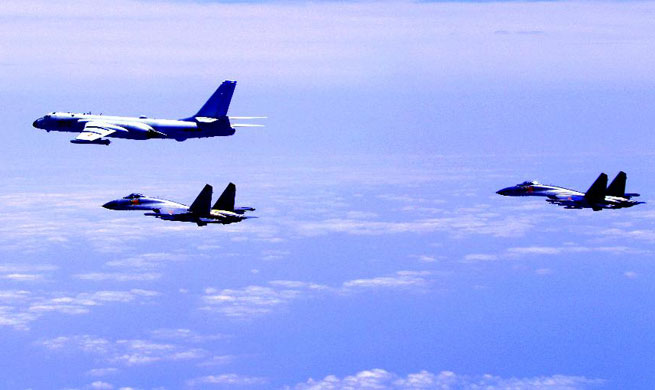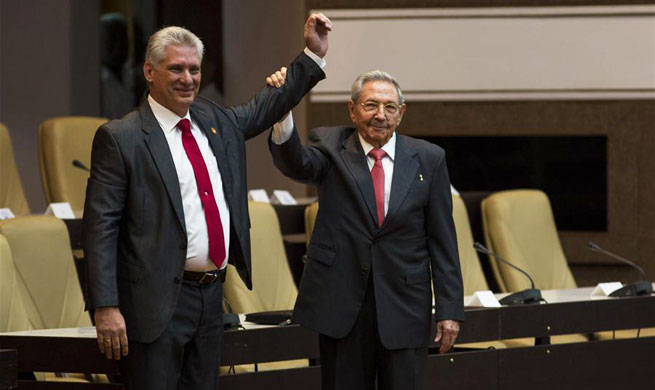by Bruce Westbrook
HOUSTON, April 19 (Xinhua) -- The Chinese-American relationship in films is shifting to lucrative co-productions and to the premieres of many Chinese films at American film festivals.
No such festival has been more important to China than WorldFest-Houston, whose 50th anniversary event last spring brought the third year of its groundbreaking Panorama China, the largest showcase of Chinese films at any film festival outside of China.
The 51st edition of WorldFest-Houston International Film Festival will kick off on April 20 through April 29 in Houston, the fourth-most populous city in the United States and the largest city in State of Texas.
The film festival will showcase 50 new independent feature films and 108 award-winning shorts from over 70 countries and regions across the world.
As a part of the festival, the fourth edition of WorldFest Focus on China will premiere almost 20 Chinese feature films as well as several China short subjects, providing Houston audiences the opportunity to enjoy the new emerging Chinese cinema.
WorldFest-Houston Chairman Hunter Todd told Xinhua that most film festivals around the world include one or two Chinese movies. "But we are the first film festival that's made an ongoing effort to establish a major survey of Chinese films. China is more represented in our festival than any others."
He said festival attendees have been "so impressed by the quality of independent and studio Chinese films. The amazing thing is, when you see 10,000 horsemen coming over a hill in costume in a Chinese film, it's not CGI (computer generated imagery), which can be soulless. And some of the independent films they have are powerful, magnificent things."
But there's more to the movie business than festivals, which are only an introduction of films. To date there's been little chance for exhibition of Chinese-only studio or independent movies in America -- at least apart from film festivals.
Chinese-Americans accounted for 3.8 million people and 1.2 percent of the total U.S. population in the last census (2010). Although Houston is America's most diverse city and has a large Asian population, its more than 72,000 residents of Chinese origin (in a 2013 survey) have not been enough to spur theatrical runs.
"There's a substantial Chinese population here, but so far no theater just for Chinese films," said Rick Ferguson, executive director of the Houston Film Commission.
At most, Ferguson said, some major theater chains show Chinese films for one or two days at a time.
This absence also mystifies Todd.
"Houston has one of the largest Asian markets in North America," he said. "Our festival gets exceptionally good attendance from the Chinese community -- from young Chinese and from older, established Chinese. And since we do this with the cooperation of the government of China, we do get big new movies which are having their premieres. And that's exciting."
There is no limit on exhibiting Chinese-American co-productions, which have increased in recent years and have included 2016's The Great Wall, an action-adventure fantasy co-starring America's Matt Damon.
Co-produced by Chinese and American companies, The Great Wall generated more than 170 million U.S. dollars at the box office in China and another 45 million dollars in the United States, with a cumulative global gross of 334 million dollars. However, the movie cost 150 million dollars to produce, and coupled with its massive marketing costs, its box office take was largely considered a disappointment.
Still, Chinese-American co-productions are increasing, as the two nations seek common grounds in terms of financing, working style and culture.
One recent Chinese-American co-production was 2016's animated Kung Fu Panda 3, a comedy which earned 521 million dollars in cumulative global gross.
Another was 2017's Wolf Warrior II, known in China as Zhan Lang II. The U.S.-China co-production sold modestly internationally but did historic business in China, where it earned 854 million dollars. That was the second highest single-market gross in global film history, behind only the 936 million dollars North American-only gross of 2015's Star Wars: The Force Awakens.
An action-thriller, Wolf Warrior II melded American special effects artistry to a patriotic Chinese narrative.
That has led Feng Wei, vice president of the Asia Pacific region of the U.S. Film Association, to believe co-productions "should first look at the Chinese market. We must move the Chinese domestic audience as the first goal."
Others believe the key to an evolving China-U.S. relationship in films may be developing co-productions which could attract large numbers of viewers in both culturally distinct markets. The trick is finding that common ground.
Todd sees a bright future for the growth of cooperative endeavors as the world's two largest markets find new alignments in the film industry.
"As with WorldFest-Houston, the important thing is that we reached out (to China), and they reached back," Todd said. "That is extremely significant."
Todd said that there is a strong business reason behind WorldFest Focus on China. "The film production values of China, the box office attains of China are now No. 1 in the world," he said.
In a news briefing two weeks ago regarding the coming film festival, Todd announced that his team and Chinese partner "are moving forward to a multi-million-dollar co-production of a new science fiction film", and it will be produced both in China and the United States.
According to Todd, this will be his first major co-production with Chinese partner, and it will be directed by Randal Kleiser, who is amongst the WorldFest-Houston's impressive alumni, which includes Steven Spielberg, Ang Lee and David Winning.
He told Xinhua that he also considers the WorldFest Focus on China as a platform, providing chances for emerging Chinese directors.
He is confident that the co-production of films between China and the United States in the next few years will become an incredible bridge between the two countries.

















